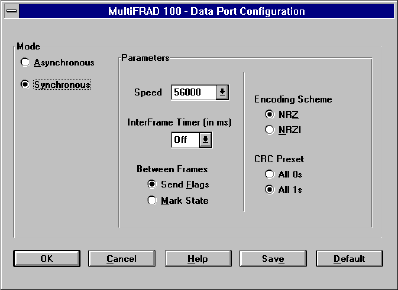
13
your capability to present data to the local telephone switch. Your
capability to present data is determined by the internal DSU (Data
Service Unit) that can transfer digital data at a maximum rate of 56,000
bits-per-second to the network. A general rule of thumb in this scenario
is to assign a CIR of 32K bps and an excess burst rate (Be) of 24K bps.
The sum of the CIR and Be can not exceed your capability to present
data to the network. Finally during subscription, the management type
is defined by the local frame relay service provider. The management
type is a mechanism for communicating the status of the PVC and is
dependent upon which type is running on the telephone switch. Three
types of management are supported by the MultiFRAD: local manage-
ment interface (LMI), Annex A, and Annex D.
1.3.2 How to Configure a MultiFRAD
Configuring a MultiFRAD is a simple process of defining the data port
device and the trunk parameters for frame relay. To configure a Multi-
FRAD, a pc has to be connected to the Data port on the MultiFRAD and
the MultiFRAD software loaded. To define the data port, the type of
device that is connected to it has to be defined. If the device is a
synchronous device such as a multiplexer, then the clocking and speed
of the device have to be defined in the Data Port Configuration dialog
box. A couple of other parameters also have to be set in order for the
multiplexer to communicate with the MultiFRAD.
If the data device is an asynchronous device, the Asynchronous Mode
option button changes the dialog box to display the asynchronous
parameters. The async parameters are the normal baud rate, word


















